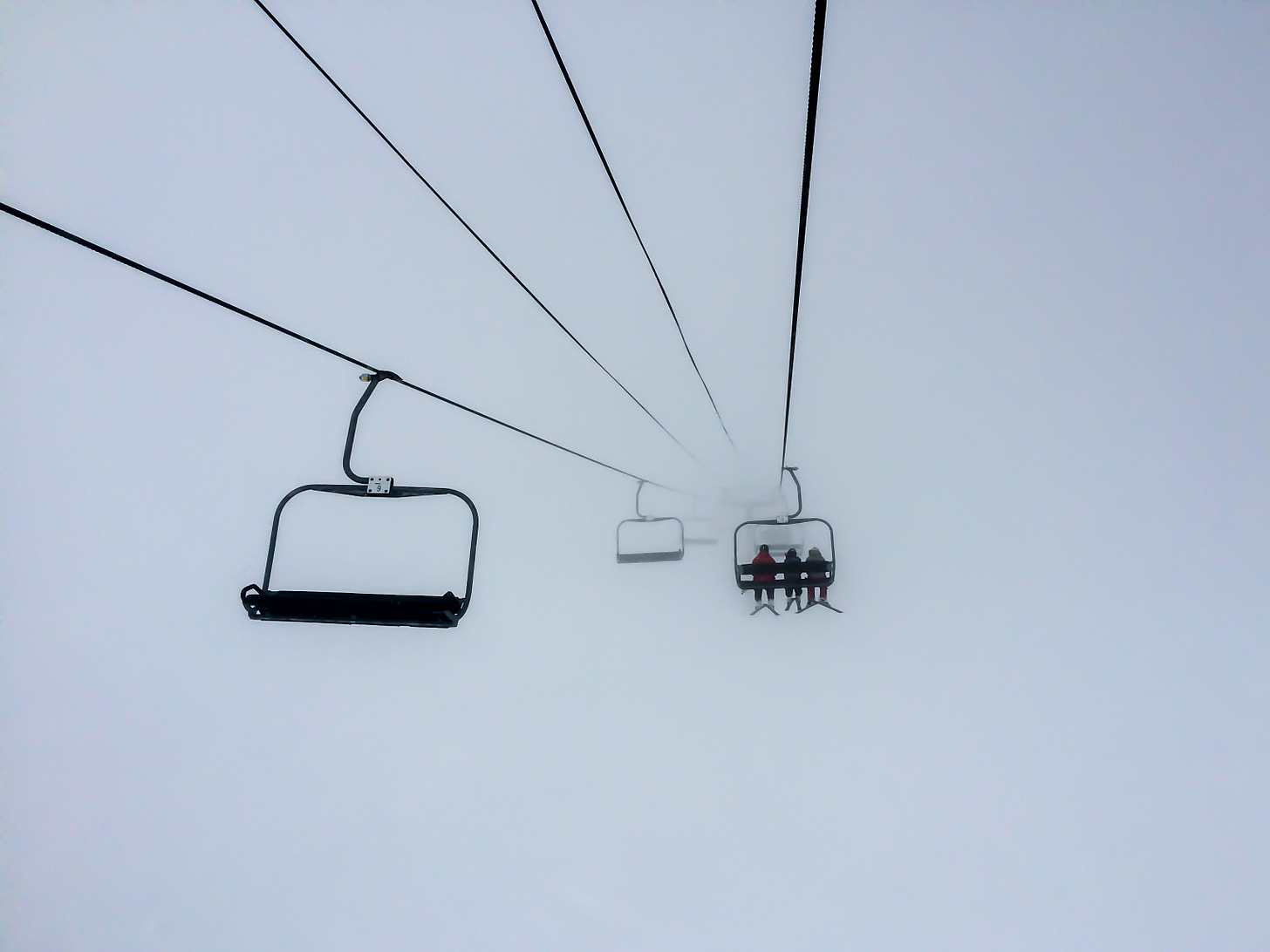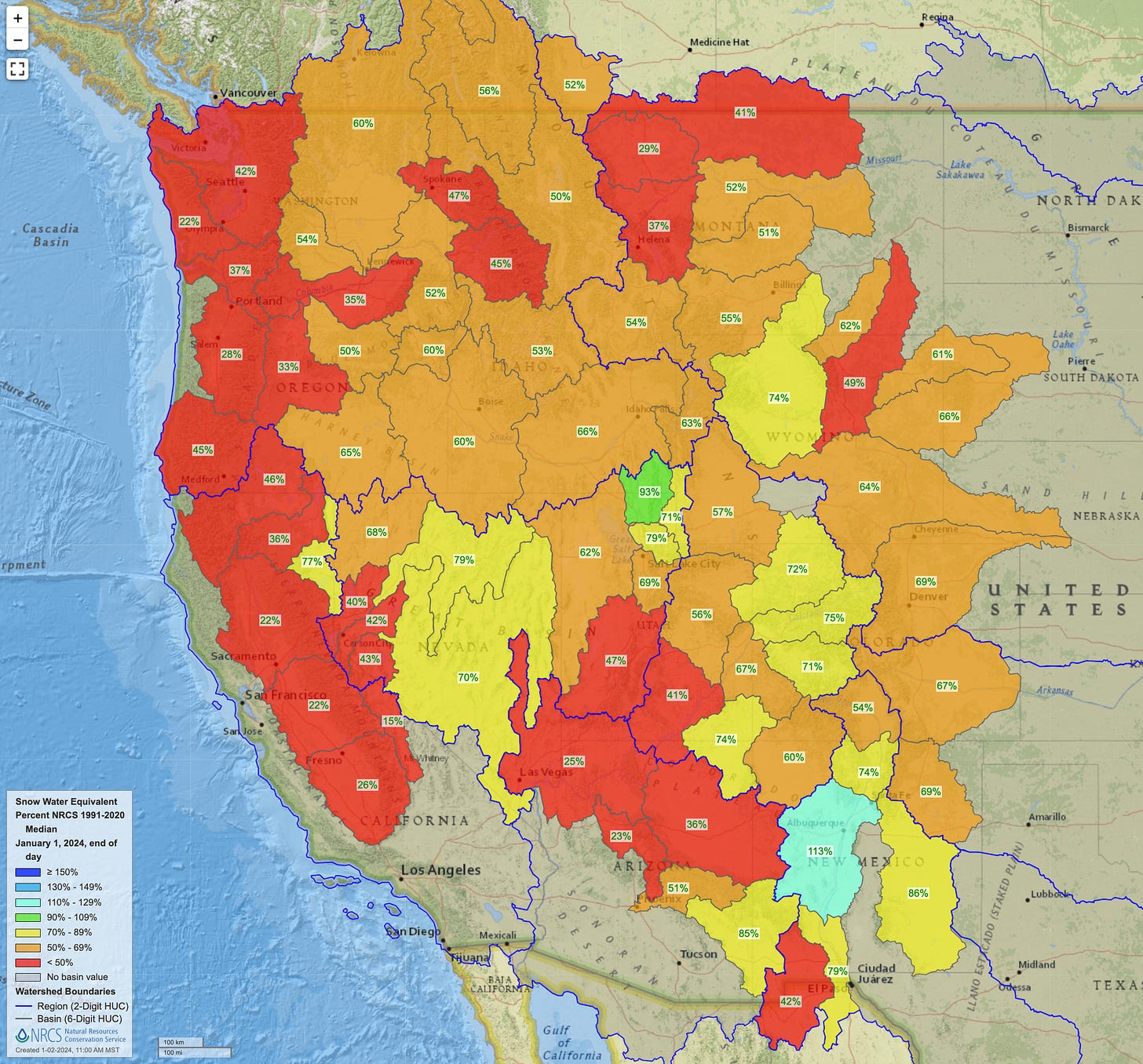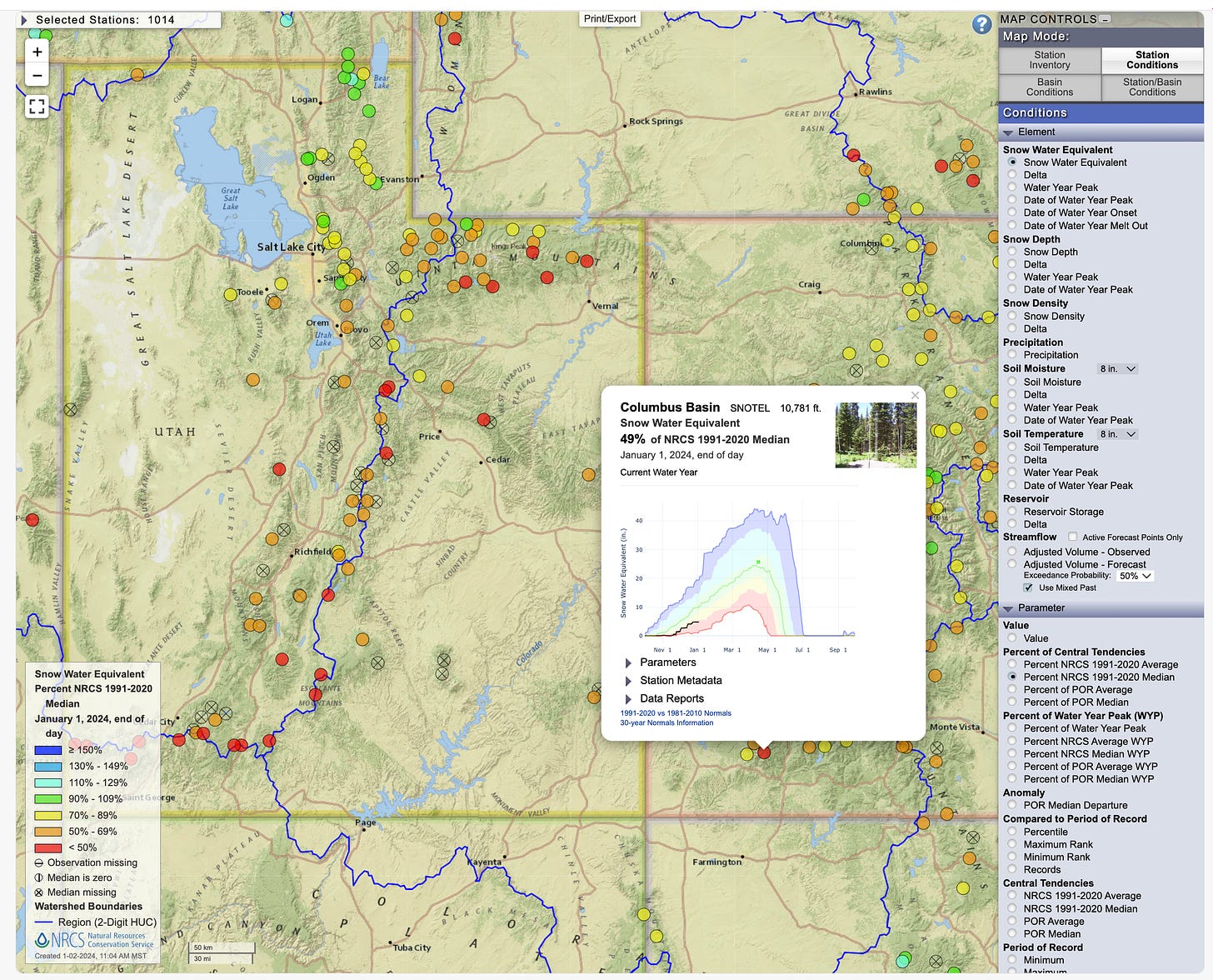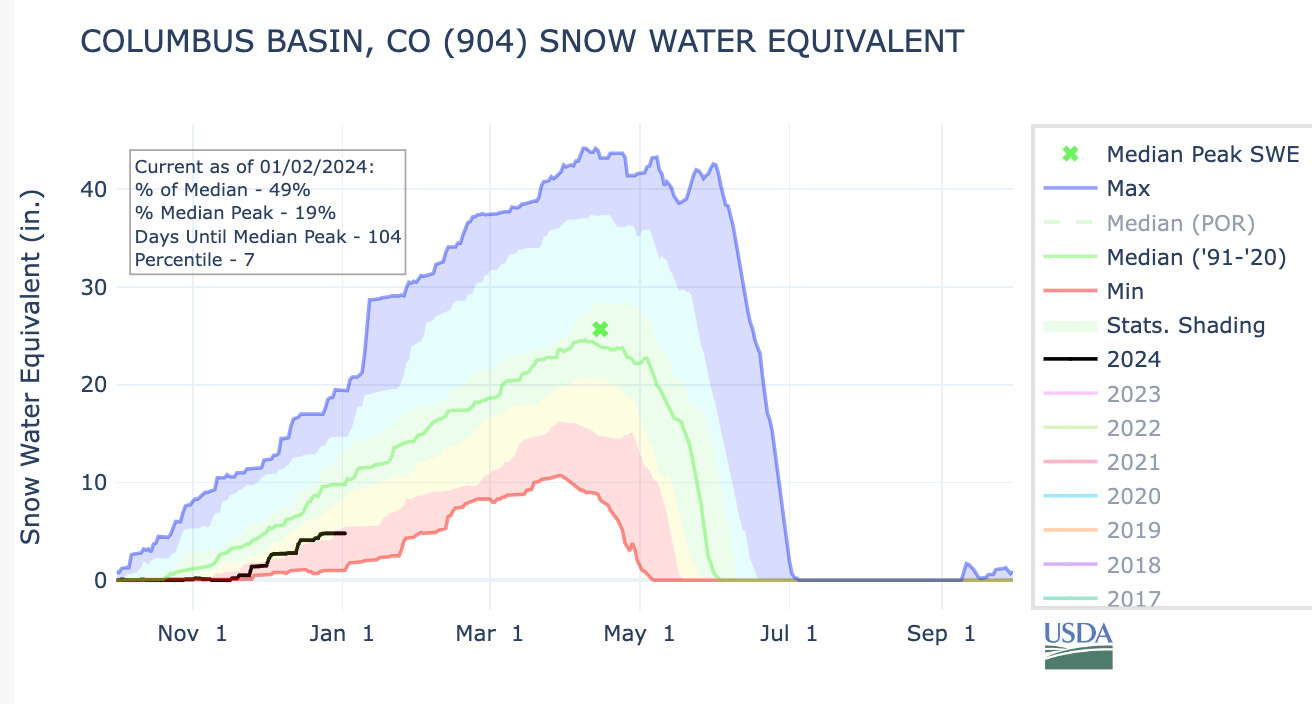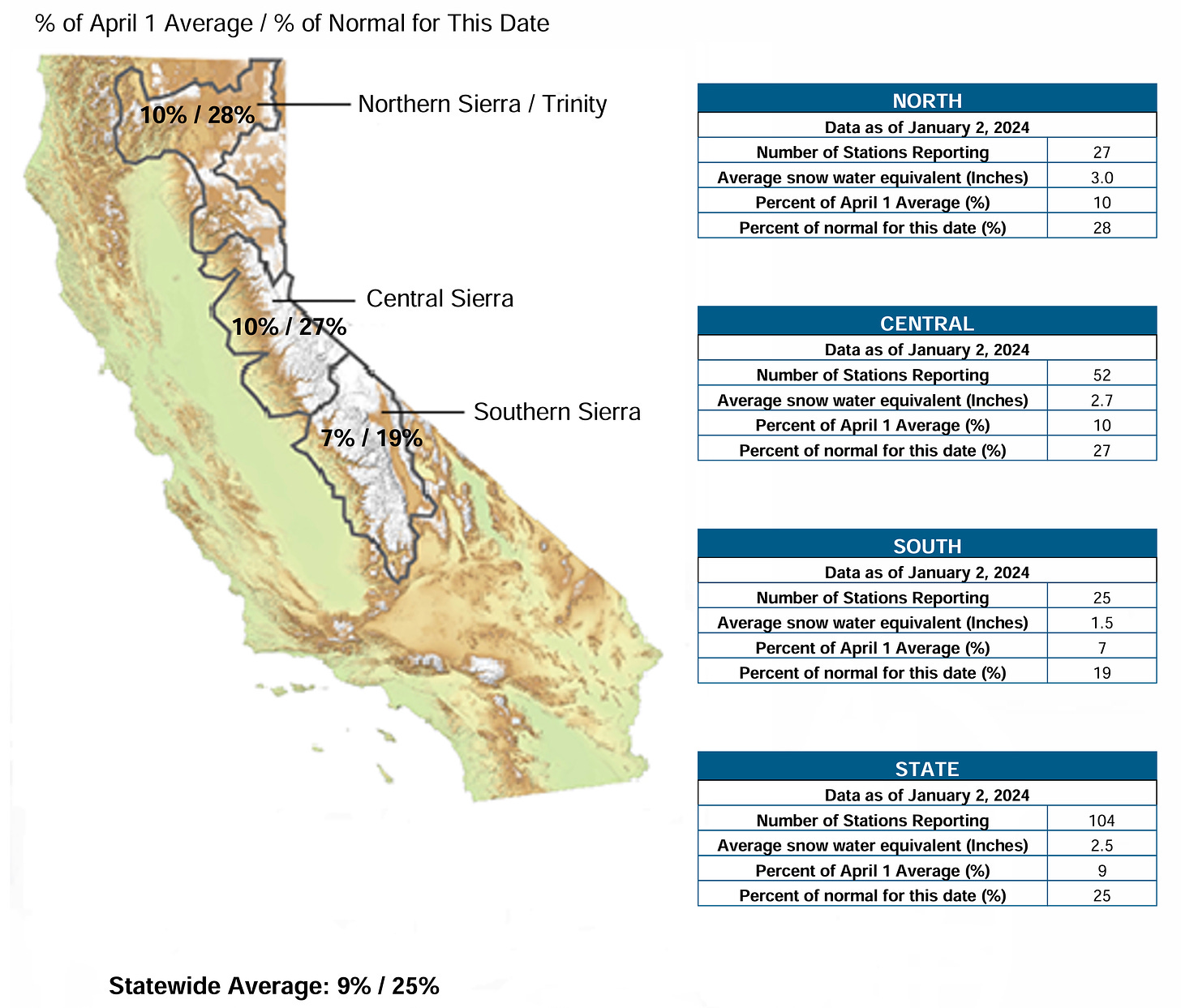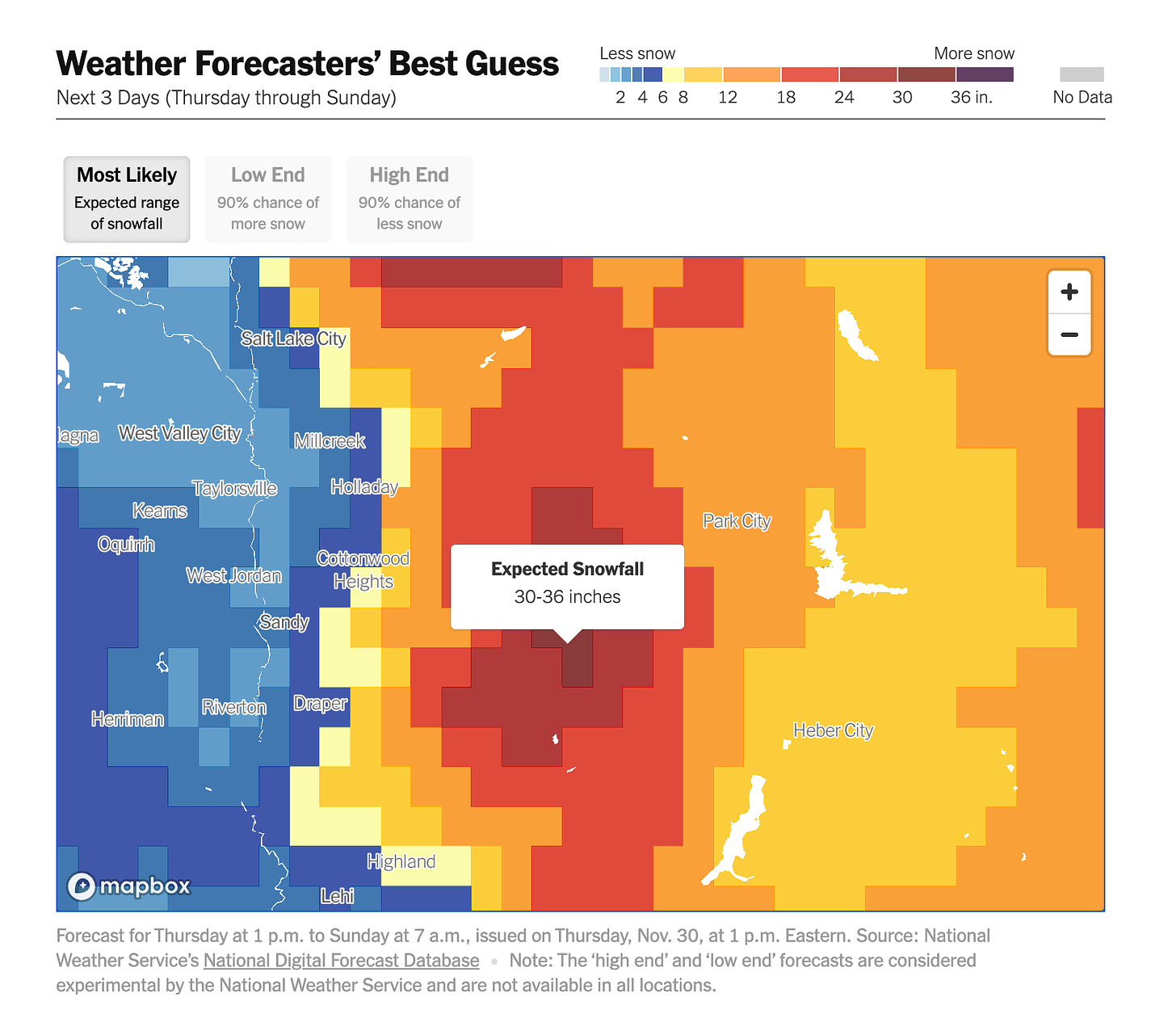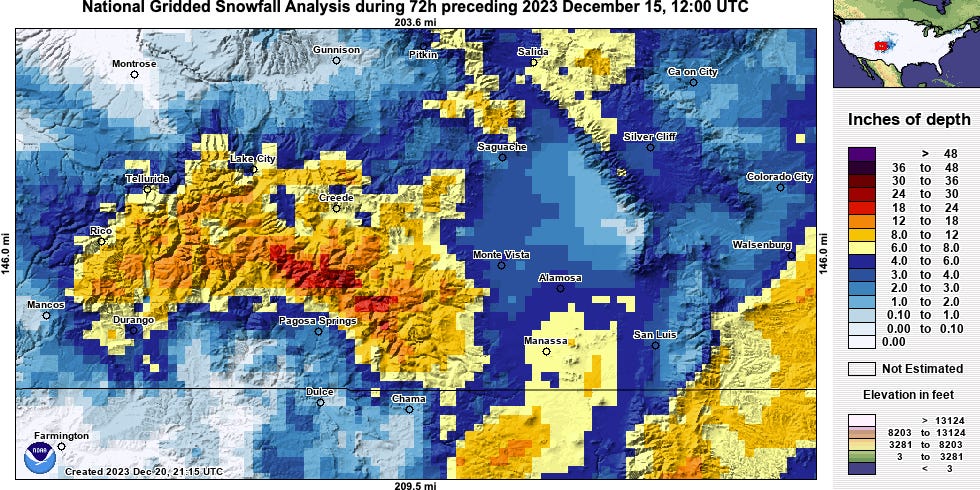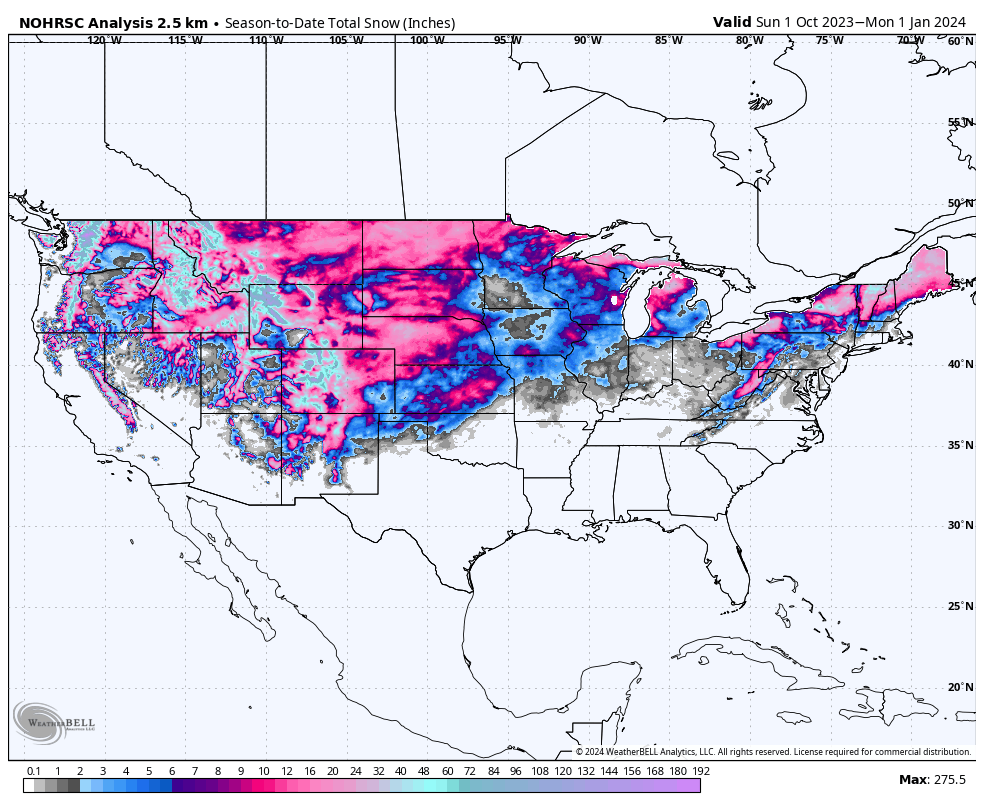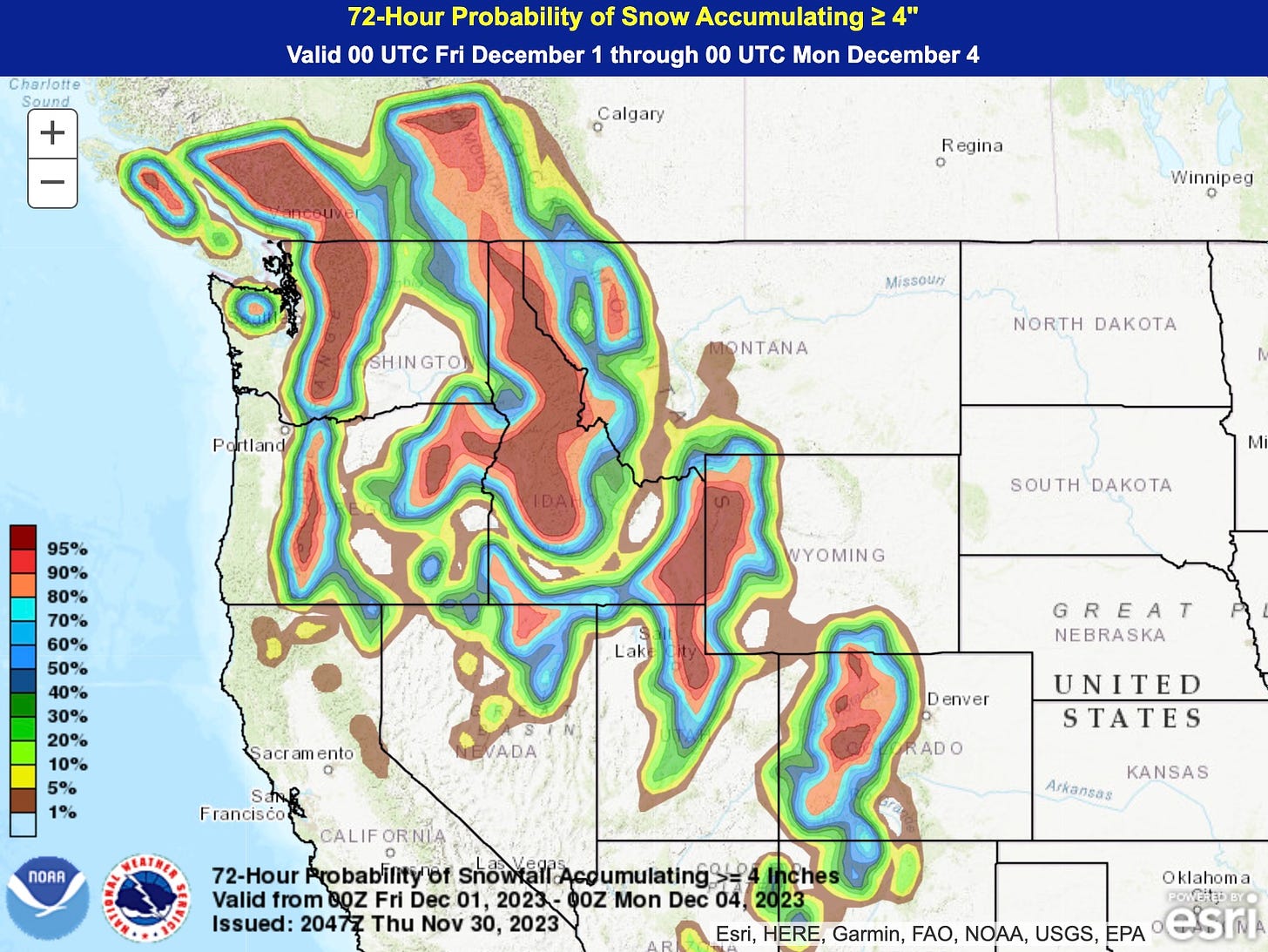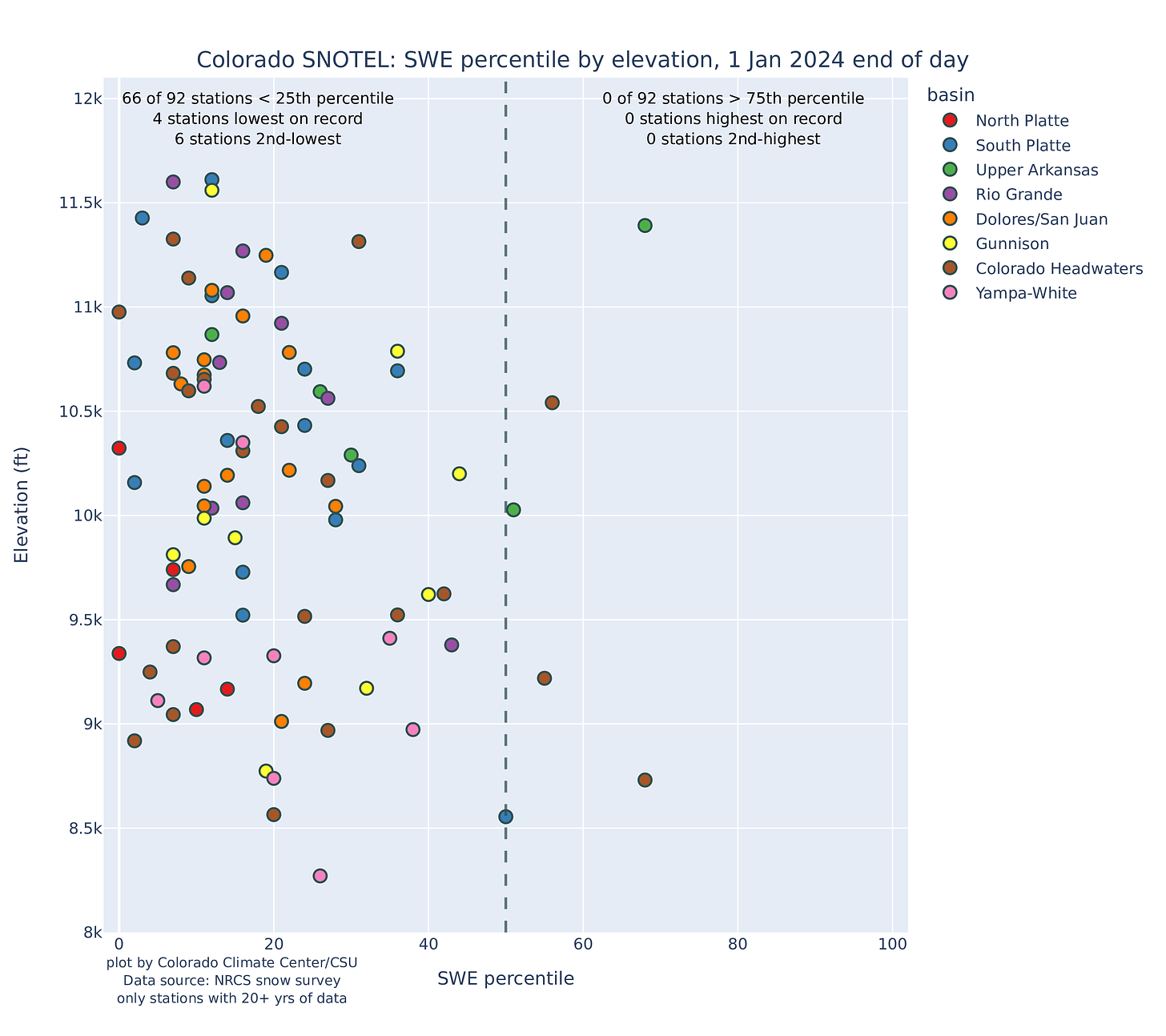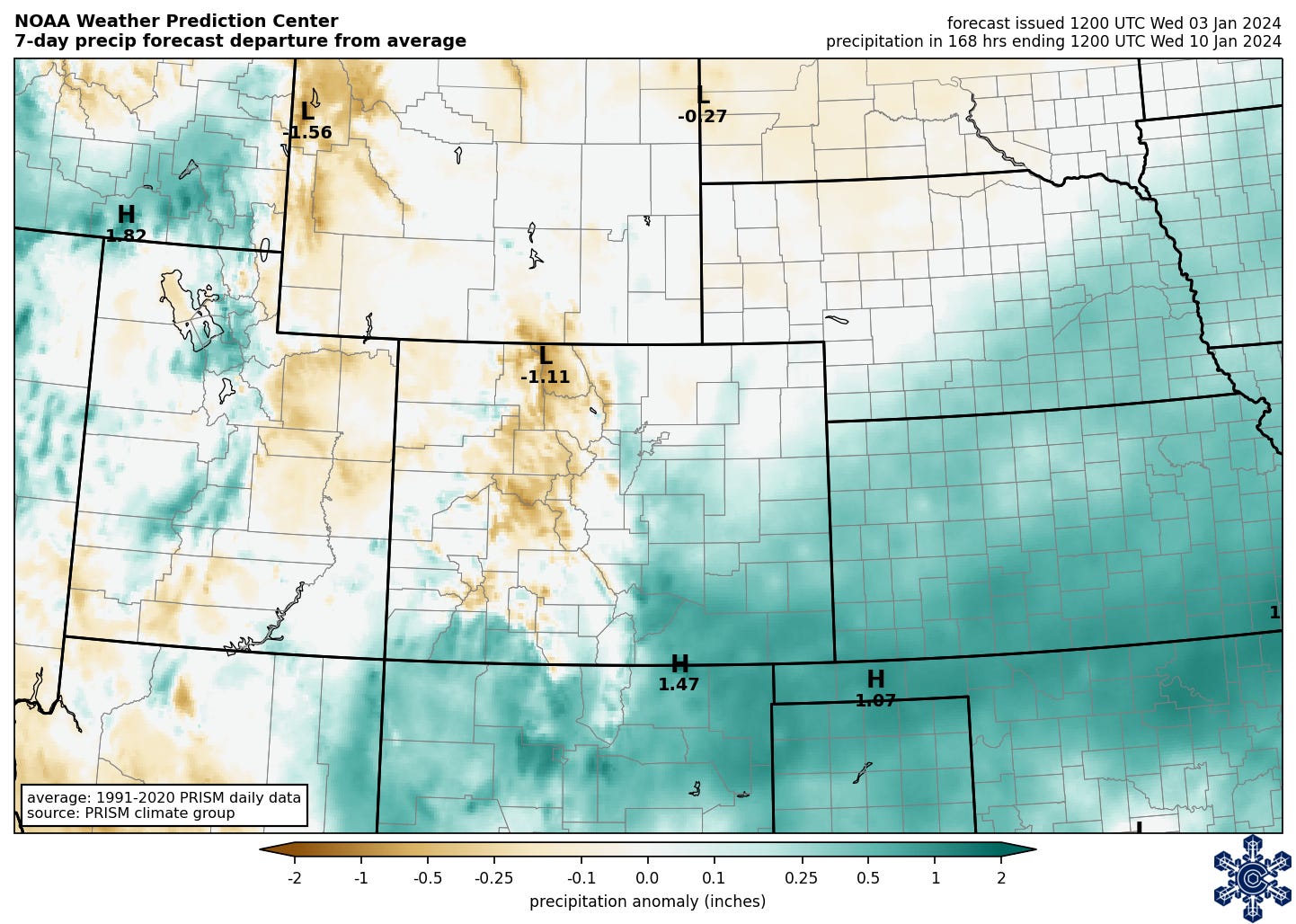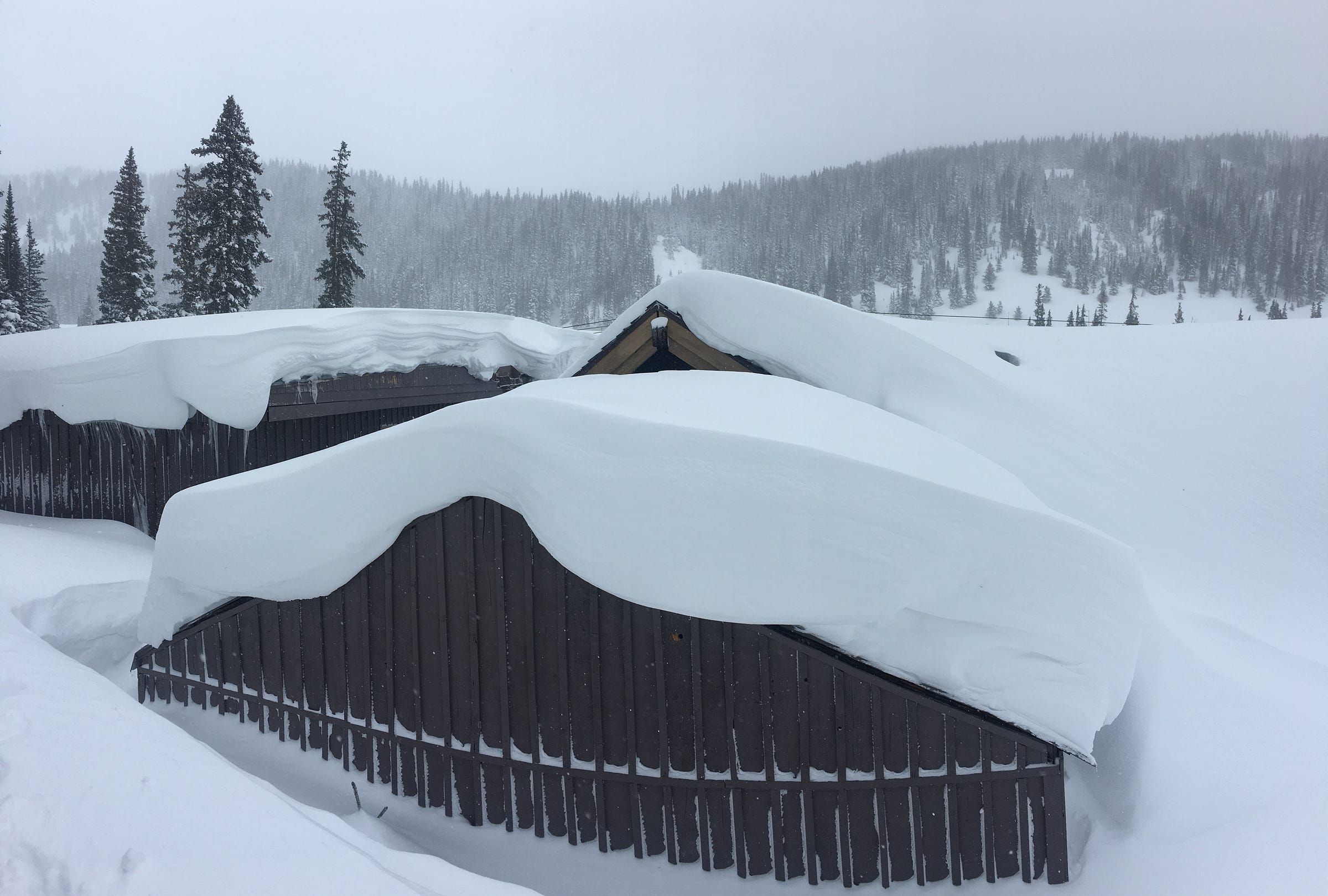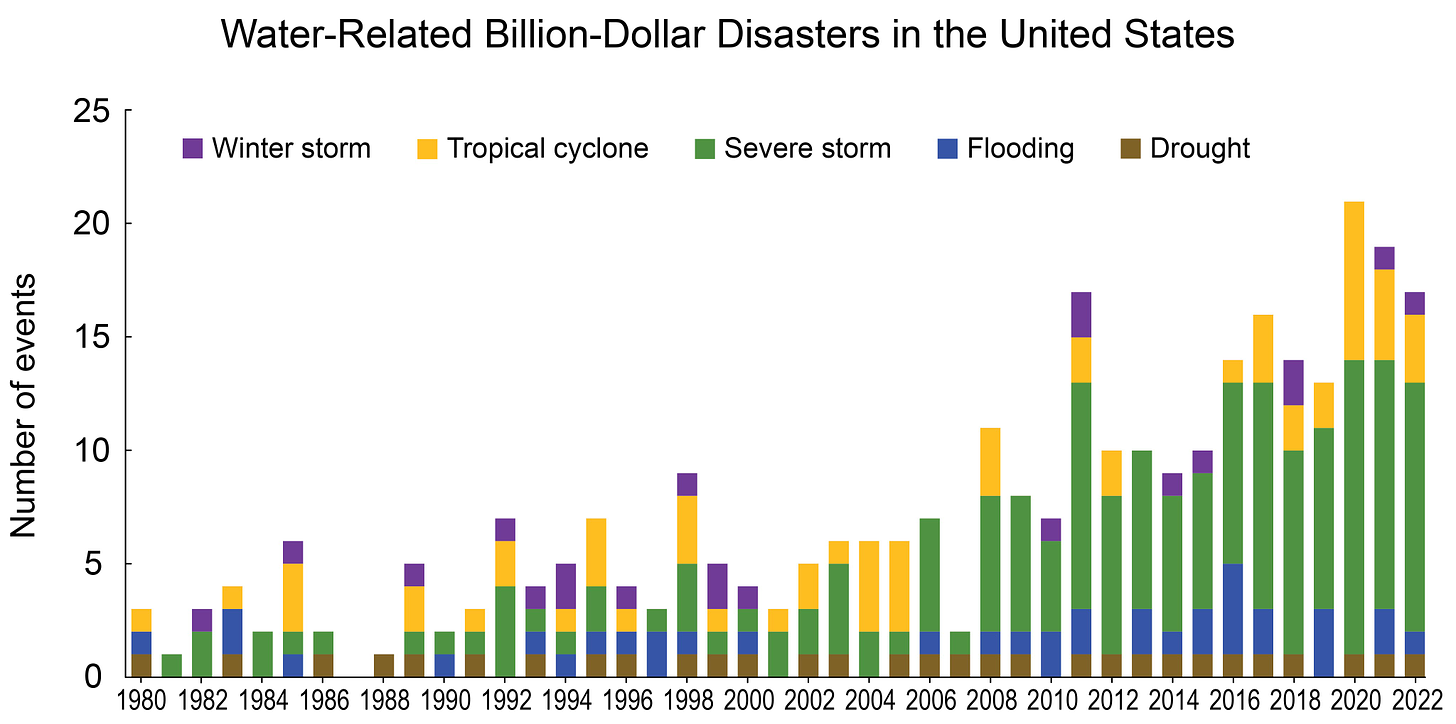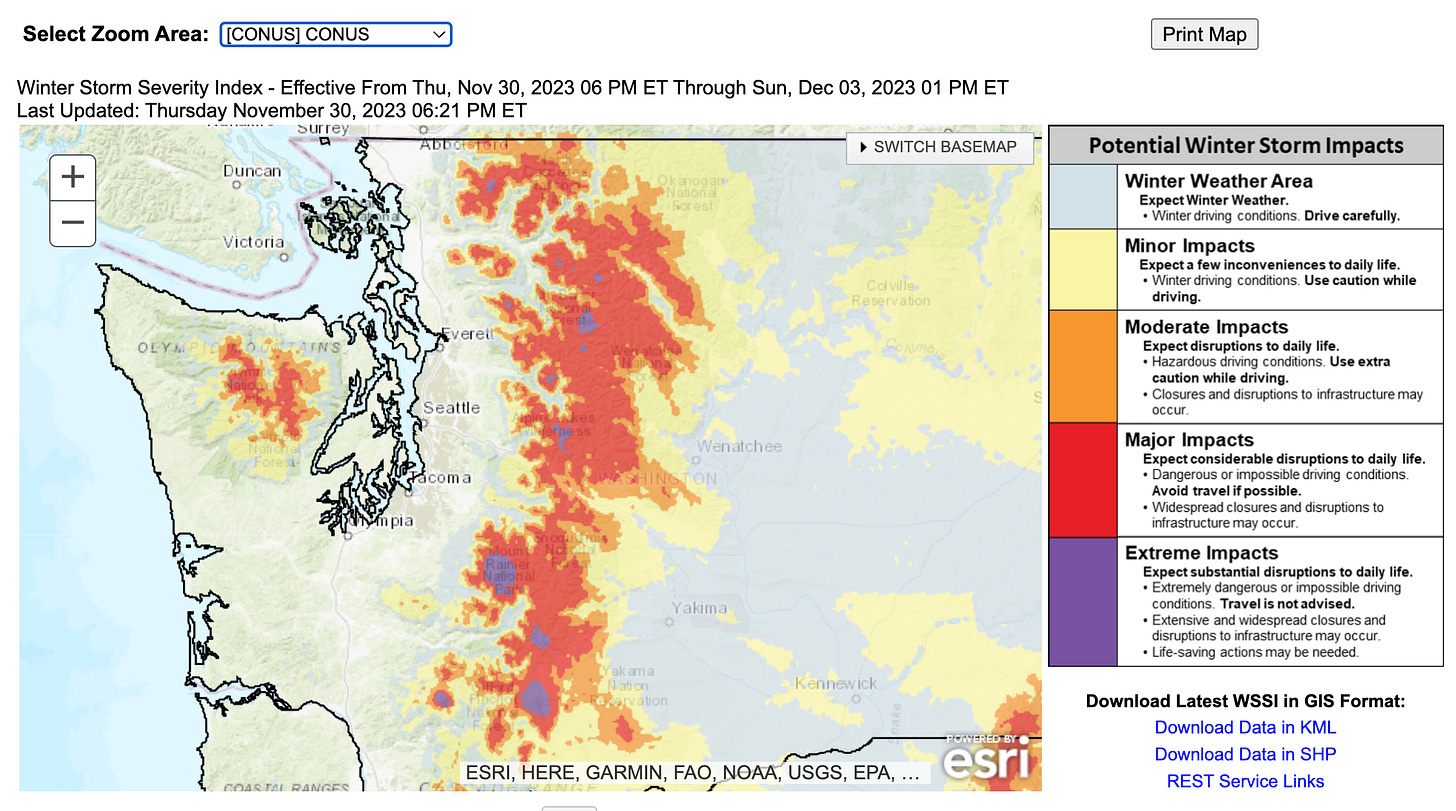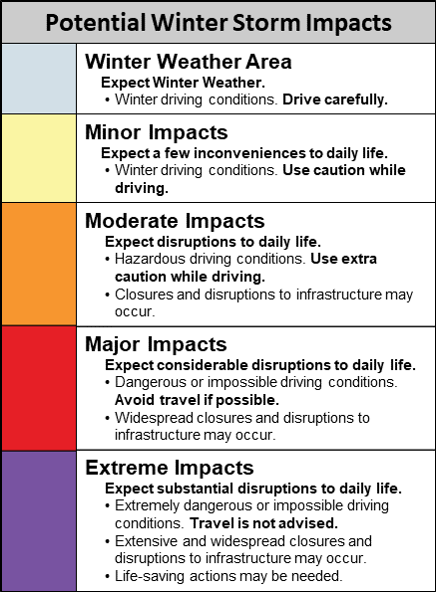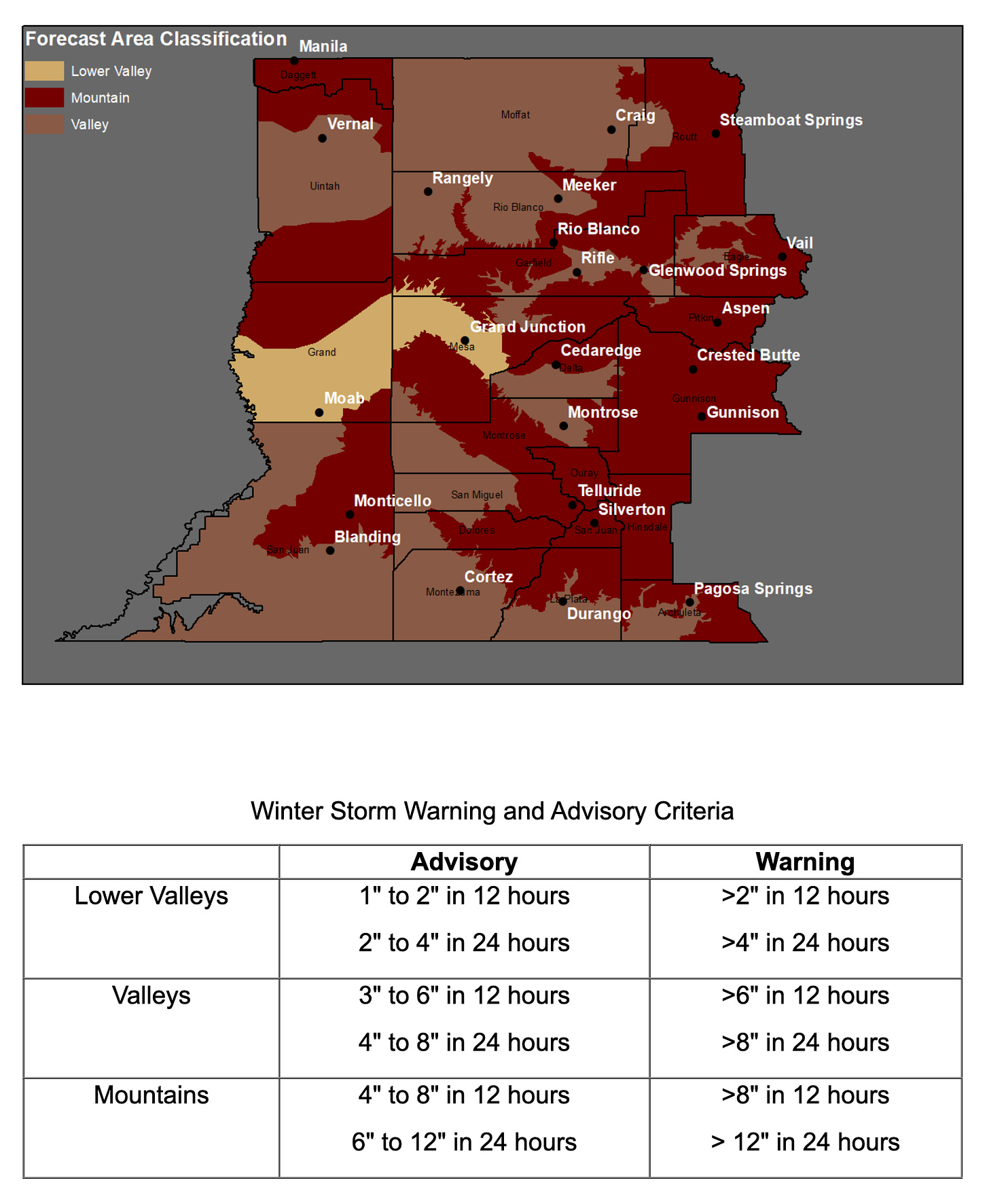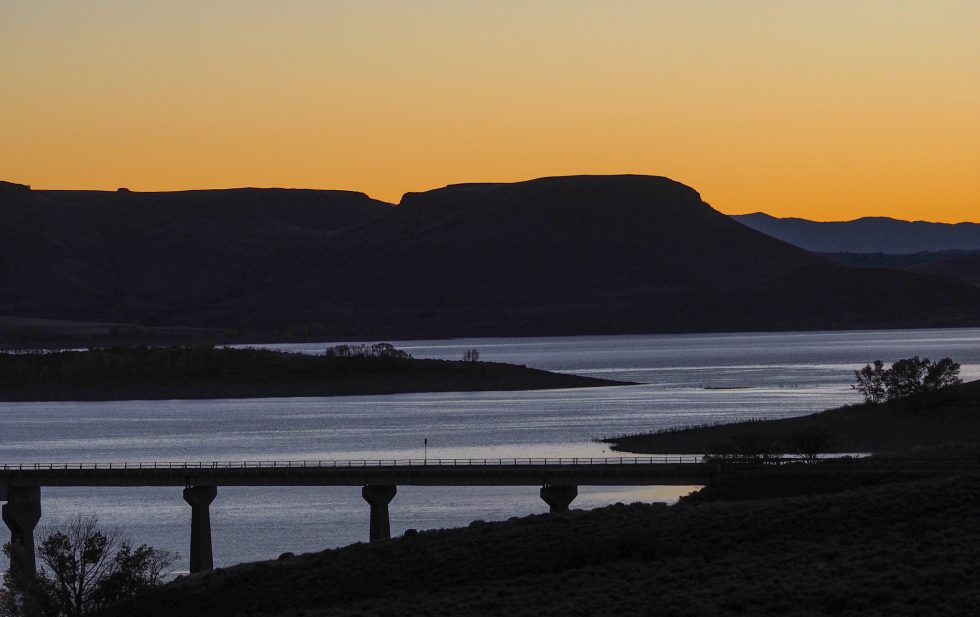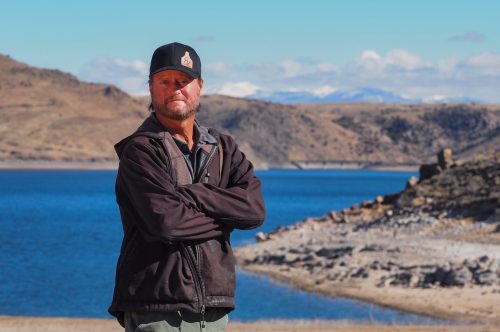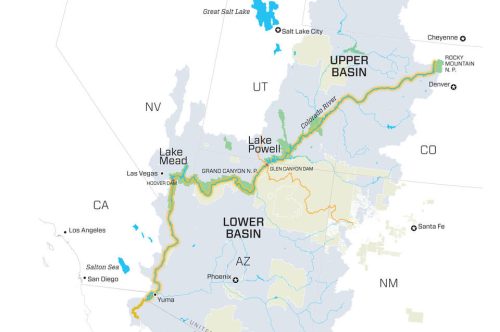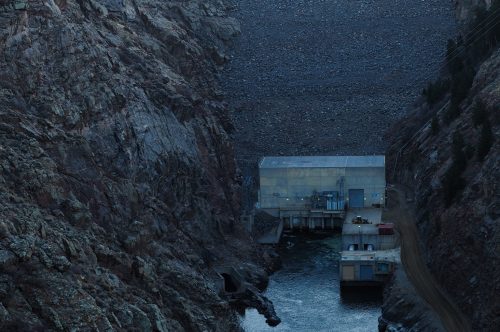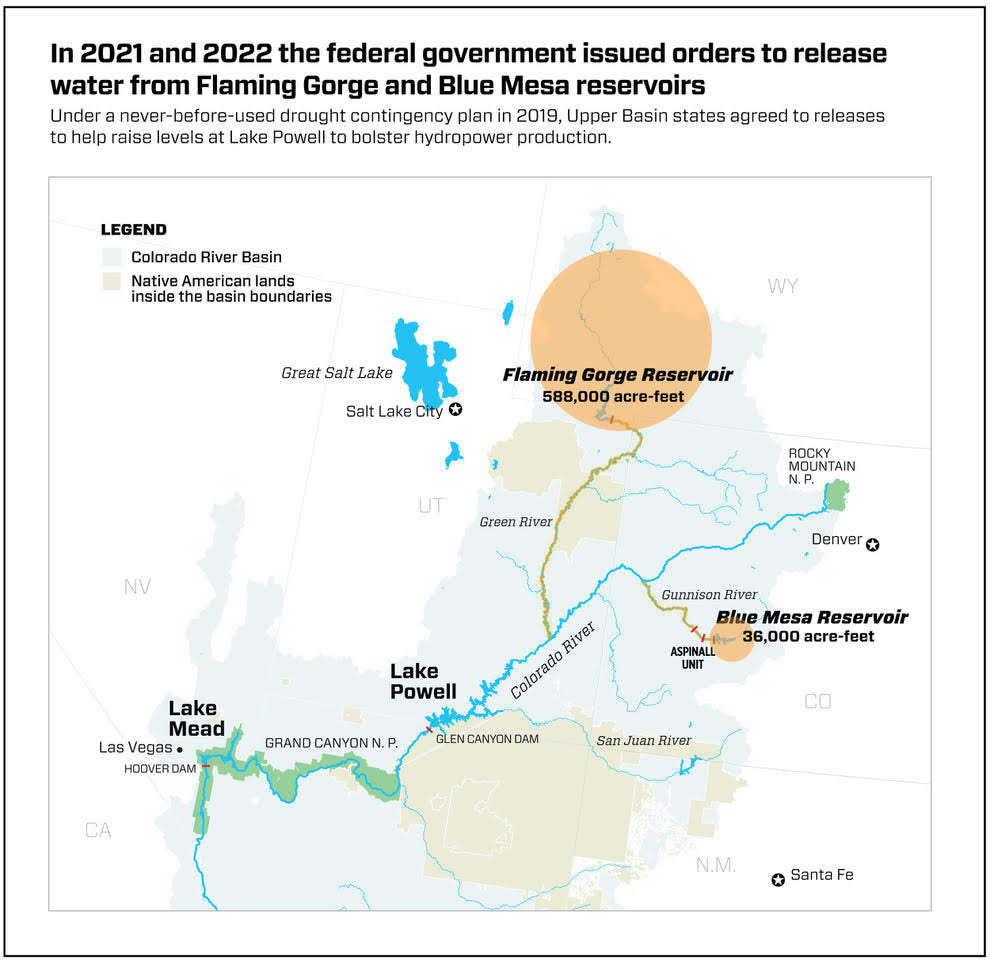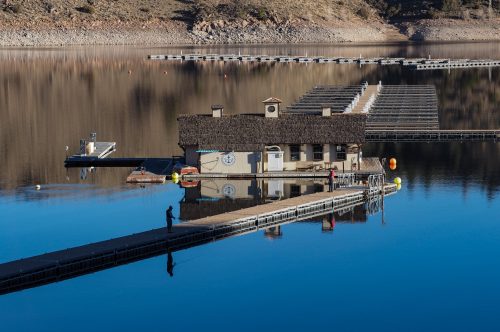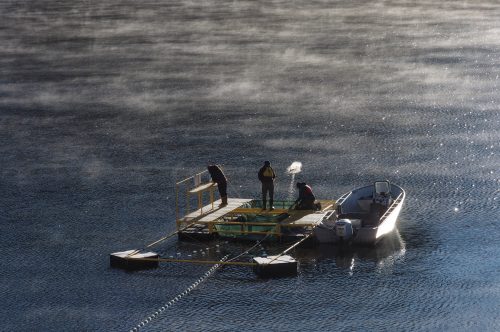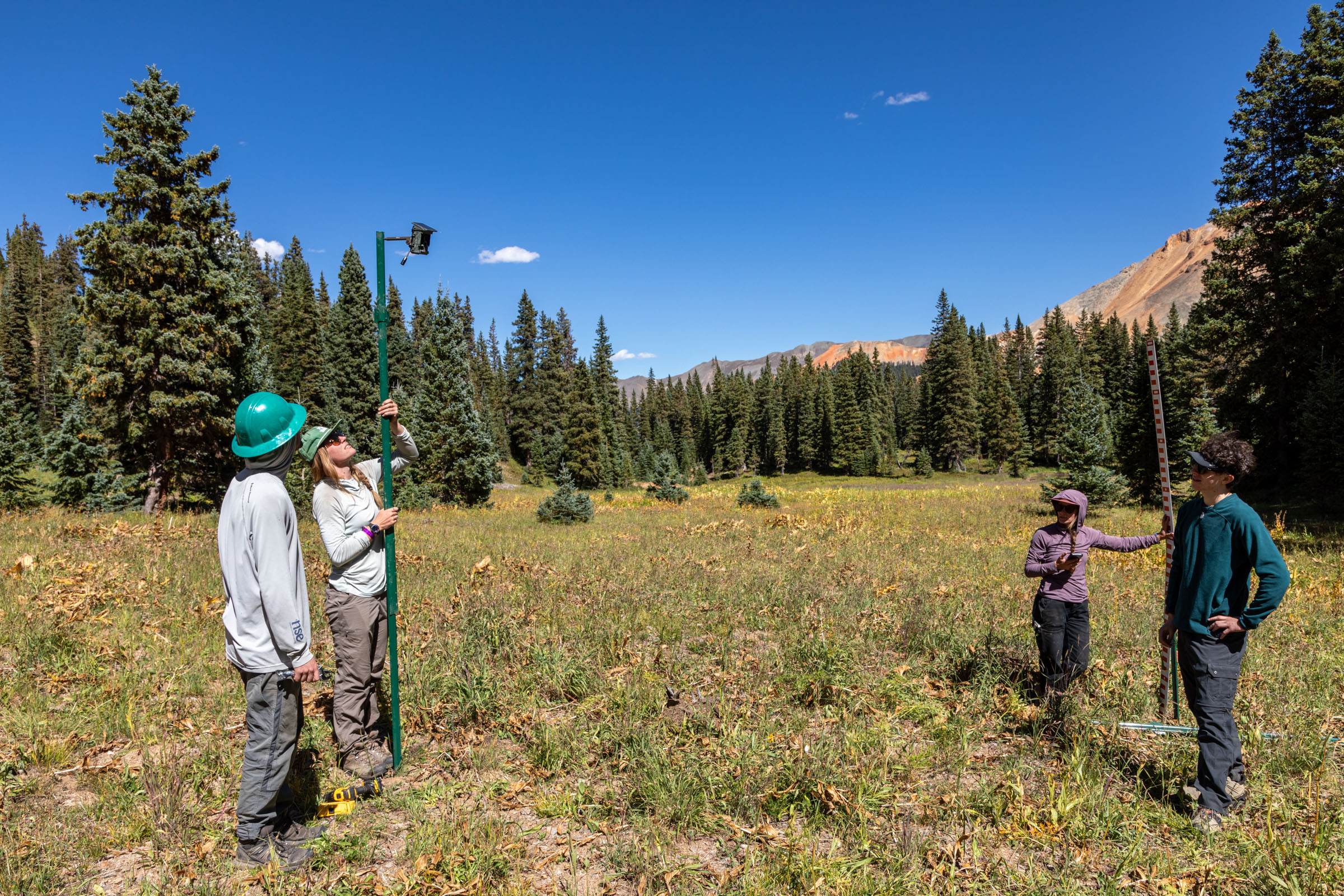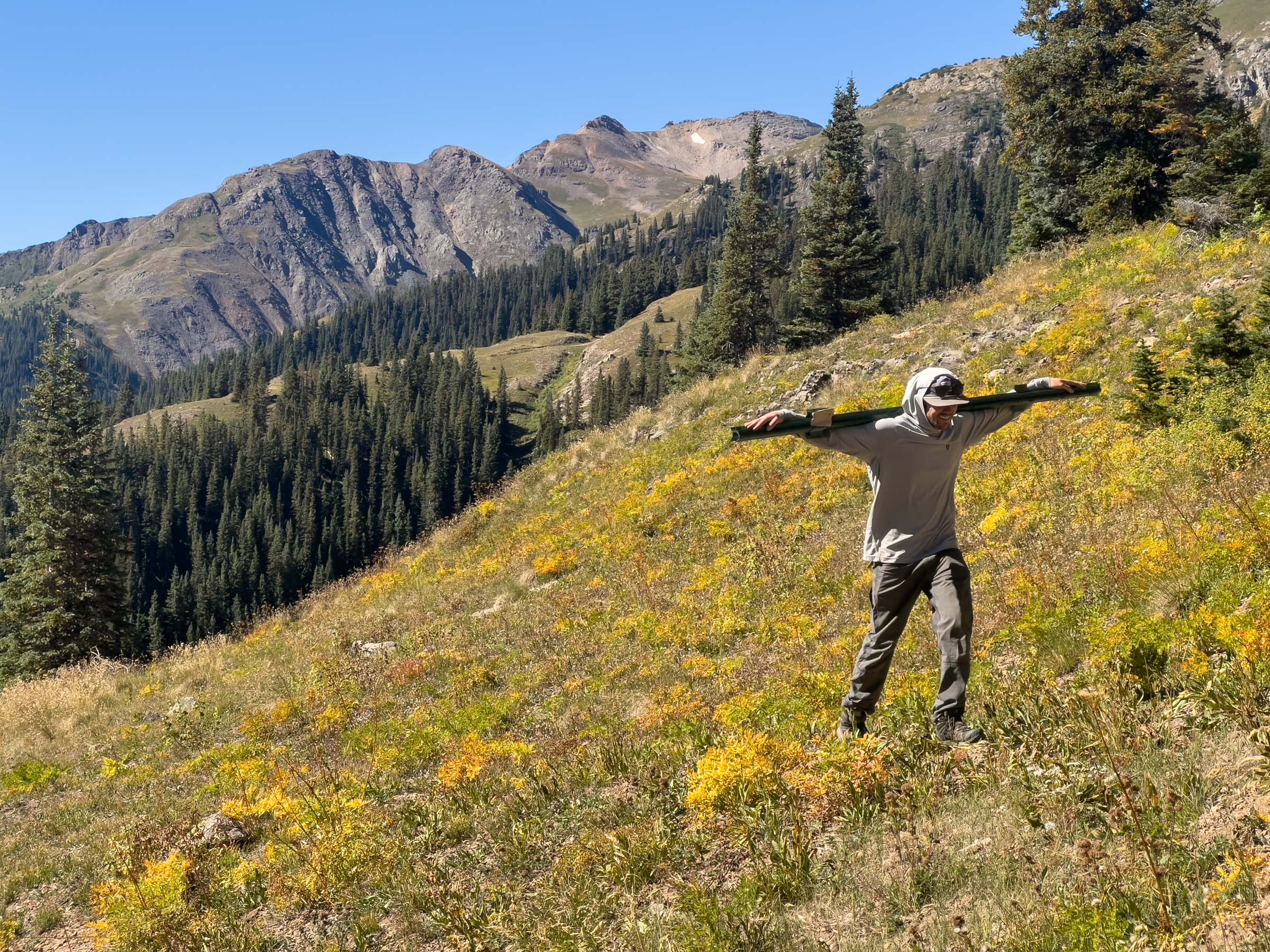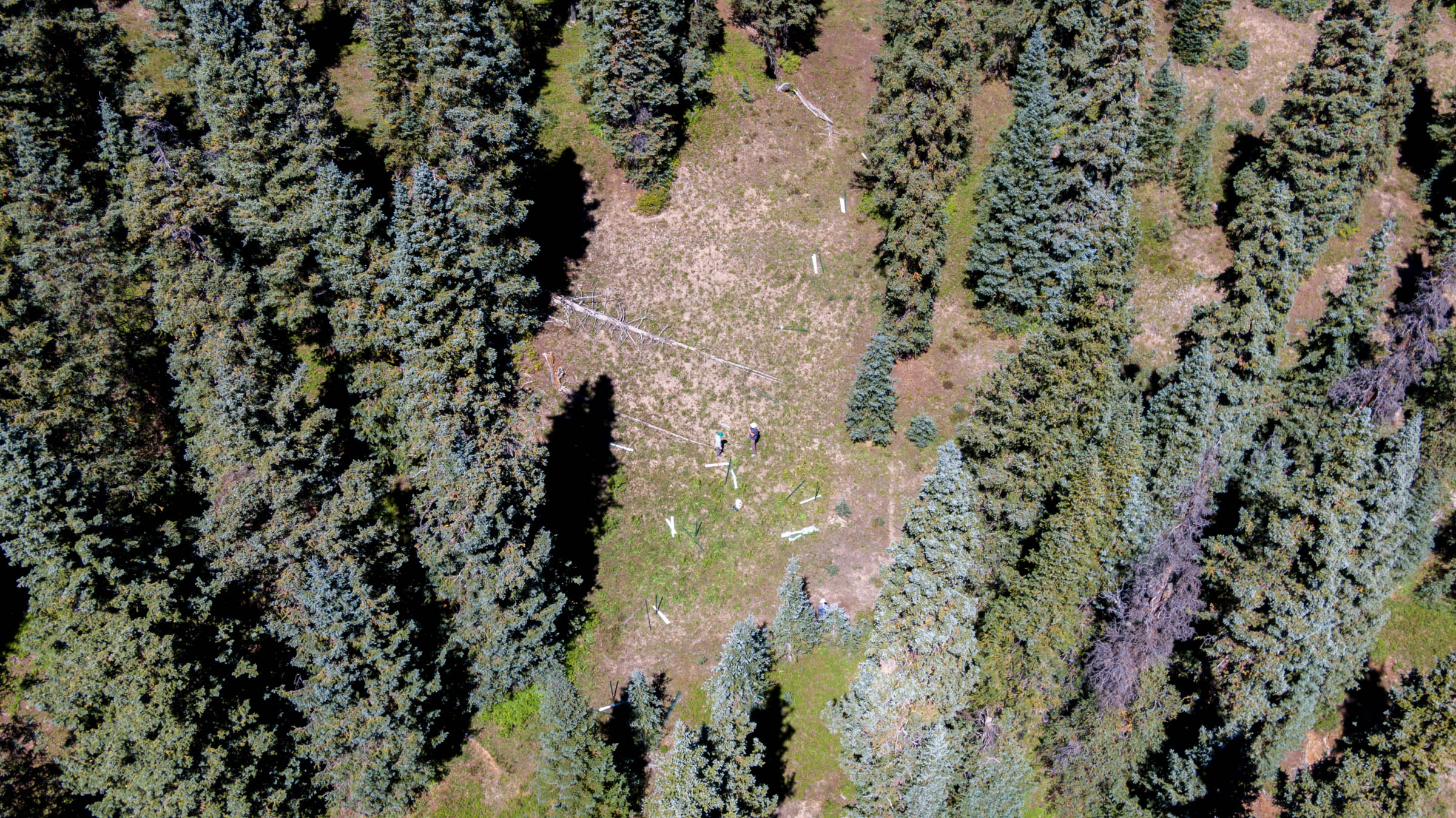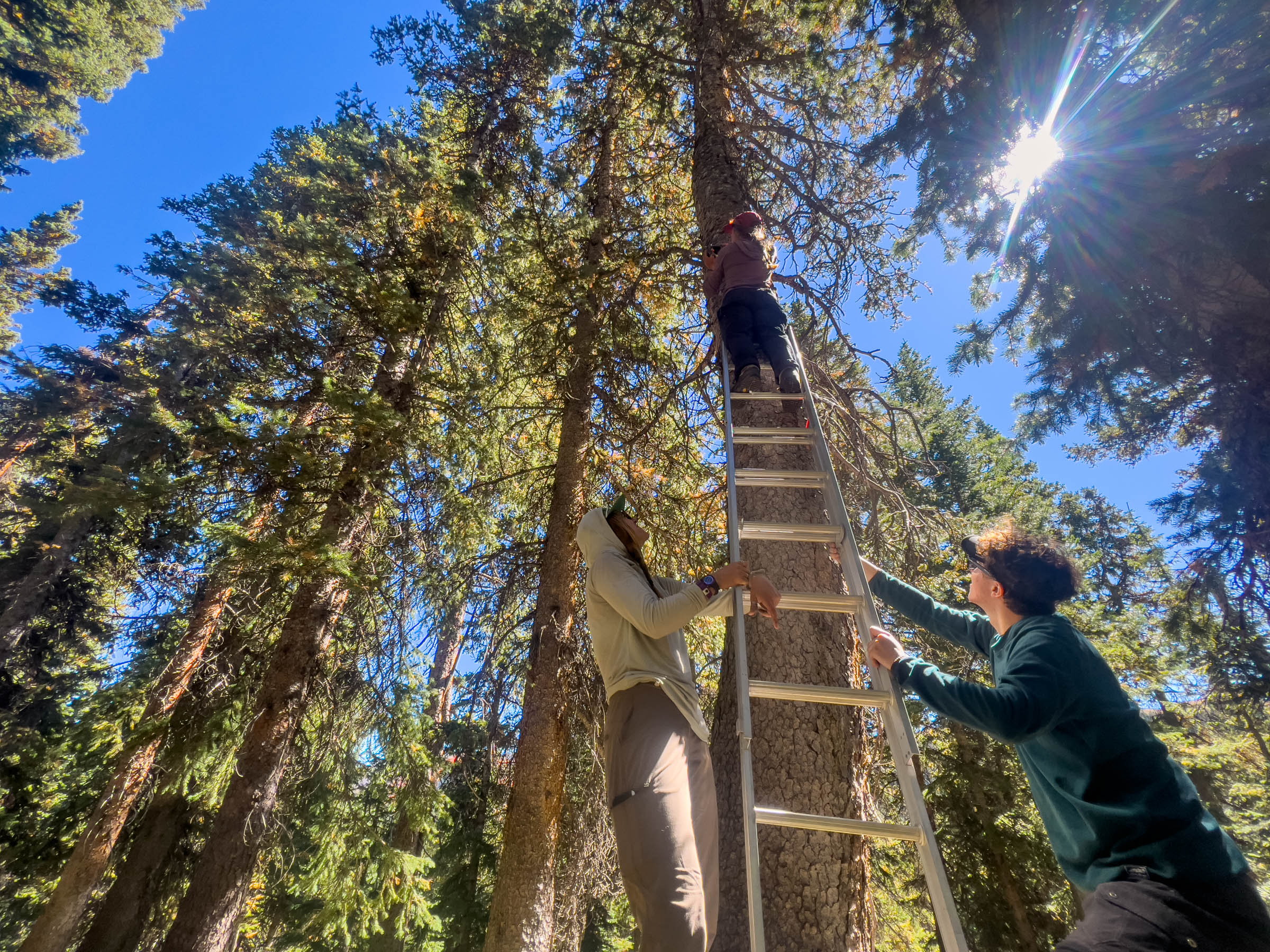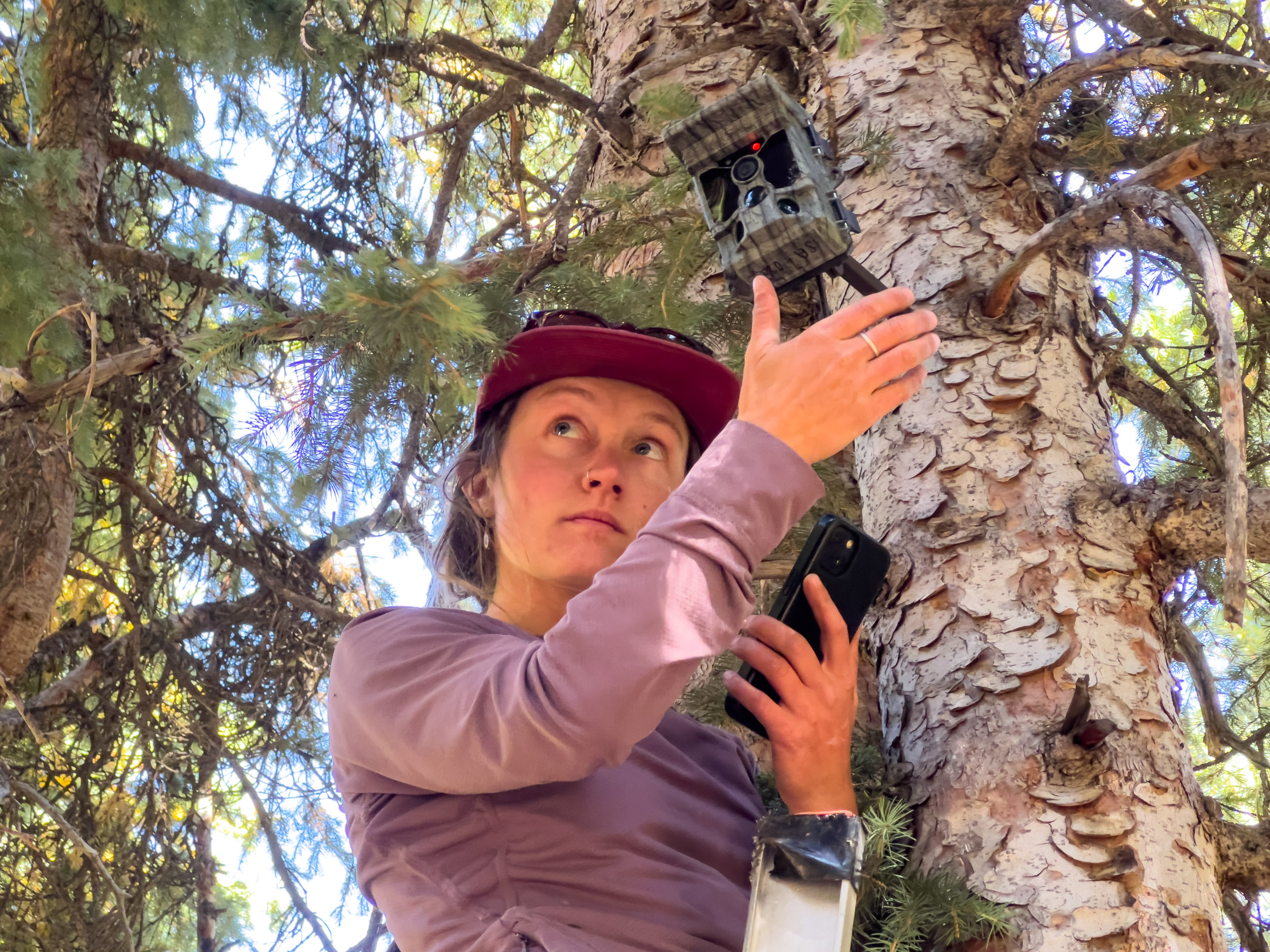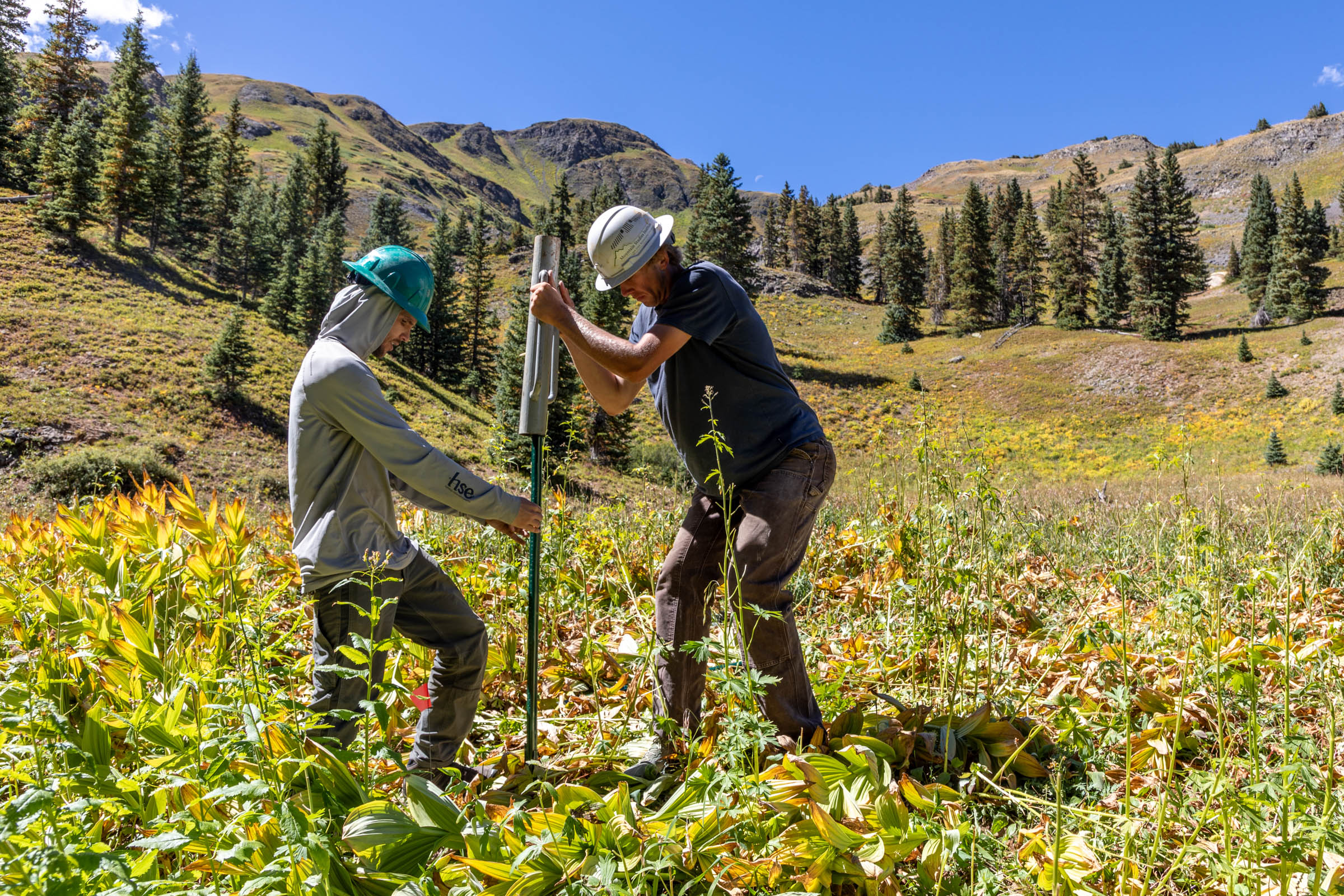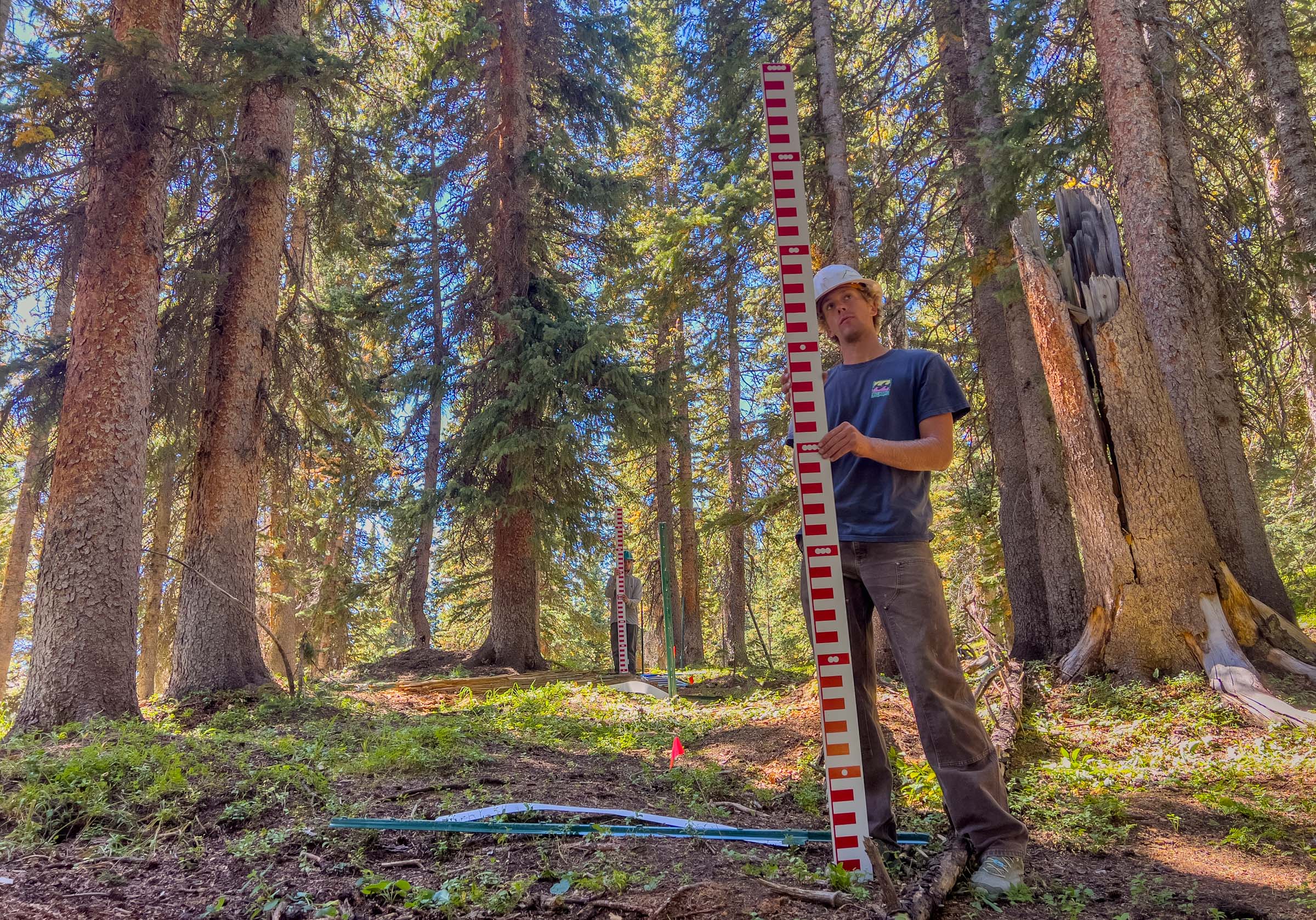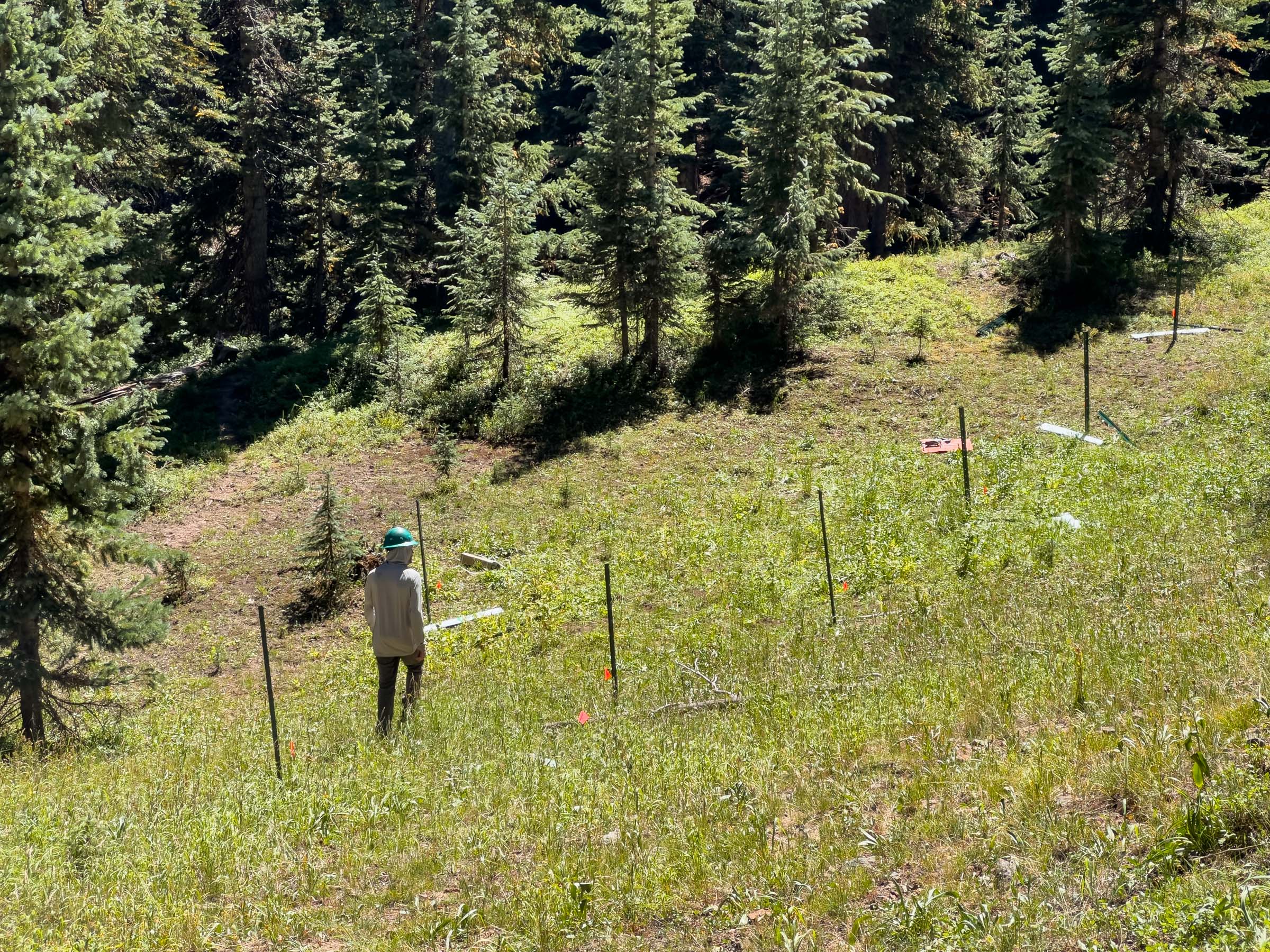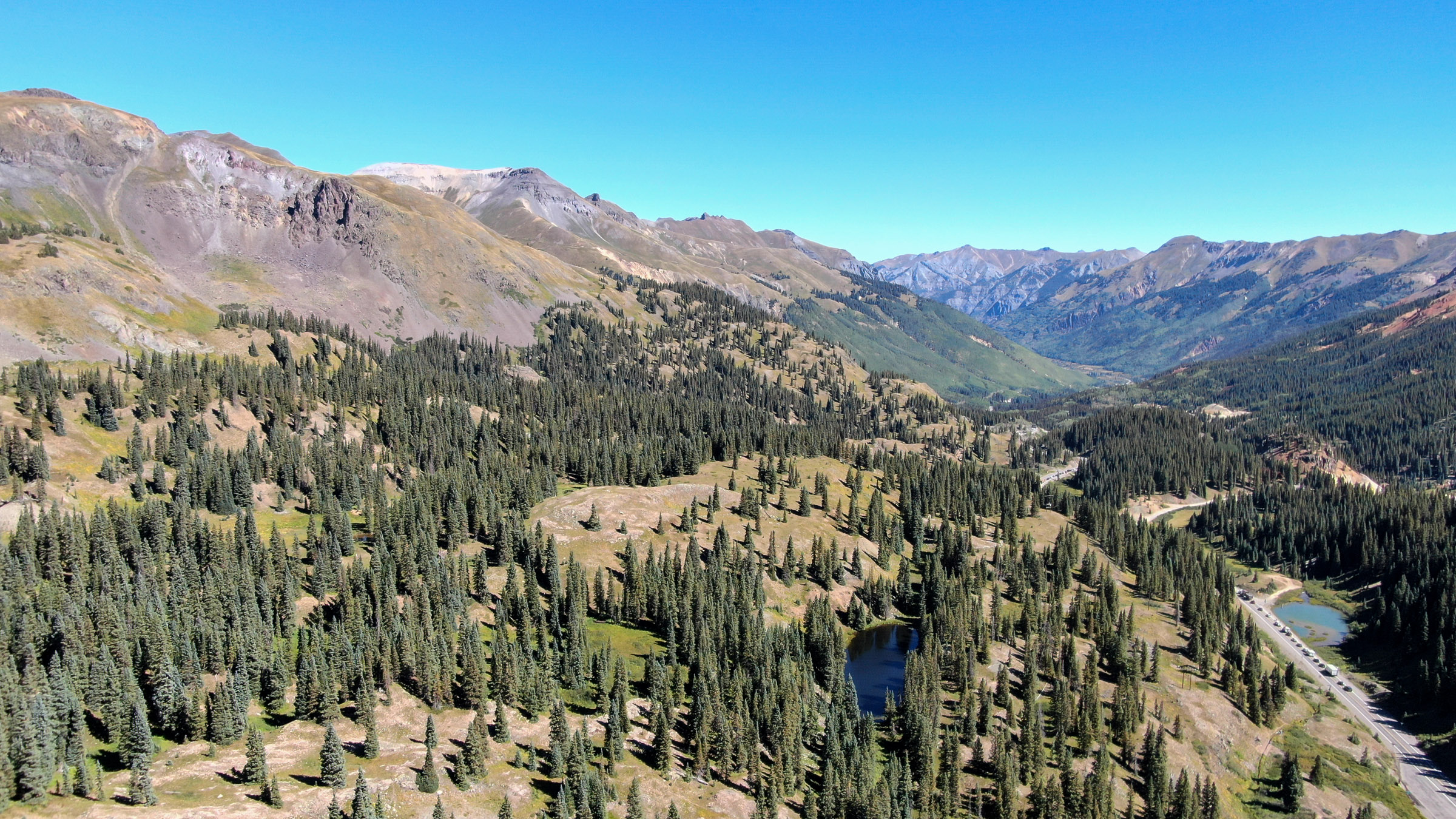
Colorado’s Glenwood Canyon is as busy as it is majestic. At the base of its snowy, near-vertical walls, the narrow chasm hums with life. On one side, the Colorado River tumbles through whitewater rapids. On the other, cars and trucks whoosh by on a busy interstate.
Pinched in the middle of it all is the Shoshone Generating Station.
“It is a nondescript brown building off of I-70 that most people don’t notice when they’re driving,” said Amy Moyer, director of strategic partnerships at the Colorado River District. “But if you are in the water world, it holds the key for one of the most interesting and important water rights on the Colorado River.”
Beneath a noisy highway overpass, Moyer looked at the hydropower plant through a chain-link fence. Her group, a taxpayer-funded agency founded to keep water flowing to the cities and farms of Western Colorado, is poised to spend nearly $100 million on rights to the water that flows through the Shoshone facility.
The purchase represents the culmination of a decades-long effort to keep Shoshone’s water on the west side of Colorado’s mountains, settling the region’s long-held anxieties over competition with the water needs of the Front Range, where fast-growing cities and suburbs around Denver need more water to keep pace with development.
Even though the Shoshone water rights carry an eight-figure price tag, the new owners will leave the river virtually unchanged. The river district will buy access to Shoshone’s water from the plant operator, Xcel Energy, and lease it back as long as Xcel wants to keep producing hydropower.

The water right is considered “non-consumptive,” meaning every drop that enters the power plant is returned to the river. The river district wants to keep it that way as long as they can and ensure the water that flows into the hydroelectric plant also flows downstream to farmers, fish and homes.
The river district is rallying the $98.5 million sum from local, state and federal agencies. The district has secured $40 million already, with deals in the works for the remainder. It’s rare for a big-money water deal to find this kind of broad approval from a diverse group of water users. But the acquisition is seen as pivotal for a wide swath of Colorado, and has been co-signed by farmers, environmental groups and local governments.
“It’s so much more than, ‘We’re going to spend $100 million to do nothing,’” Moyer said. “We’re keeping native flows in the river for so many benefits on the West Slope.”
Why Shoshone?
To understand why this unassuming power plant wields so much clout, you have to take a look at its history.
About 40 million people across seven Western states rely on the Colorado River. It supplies big cities like Los Angeles, Las Vegas, Phoenix and Denver. It supports a multi-billion dollar agriculture industry. But it’s governed by a century-old legal document and a management system that has proven frustratingly difficult to adapt for today’s policymakers.
Core to that management system is the concept of “prior appropriation,” which means that those who were first to use water will be the last to have their water curtailed in times of shortage. It often ignores Indigenous people who were using the river’s water before white settlers ever arrived. But under the rules white settlers drew up and modern governments still use today, it means older water rights are more powerful.
Shoshone’s water right is one of the oldest and biggest in the state, giving it preemptive power over many other rights in Colorado.
Even in dry times, when cities and farms in other parts of the state feel the sting of water shortages, the Shoshone Hydroelectric Plant can send water through its turbines. And when that water exits the turbines and re-enters the Colorado River, it keeps flowing for myriad users downstream.

The hydro plant itself produces relatively little energy. Its 15 megawatt capacity is only a small fraction of Xcel Energy’s total Colorado output of 13,100 megawatts. Shoshone’s capacity is enough to serve about 15,000 customers, which is less than a quarter of the population of Garfield County, where the plant is located.
But the power plant has held legal access to water from the Colorado River since 1902, and can claim seniority over the vast majority of other water owners in the state.
That kind of seniority means power and certainty for whoever owns it. And that has raised the hackles of Western Colorado water users, who worry that water users in other parts of Colorado might be interested in buying Shoshone’s water right.
Colorado’s Front Range – functionally the metro area from Fort Collins to Pueblo – only exists in its current capacity because of a complex network of canals, pipes, and tunnels cut through the mountains, carrying water against gravity to the places where it’s needed. About 80% of the state’s water falls on the west side of the mountains, but 80% of its people live on the east side.
Cities on the Front Range have been able to grow significantly over the past century, despite often having access to a finite supply of water. Their Western Colorado counterparts worry that future growth could lead those cities to spend big on more water from the West Slope and say securing Shoshone’s water blocks Eastern Colorado water users from the chance to snatch it up themselves.
Fish and farms
The Colorado River District’s plans to buy Shoshone’s water have rallied widespread support, largely because of the transfer’s widespread benefits.
Perhaps no constituency will benefit from the move as much as the one that lives in the river itself.
“Anything that results in more water in the river is good for fish,” said Dale Ryden, a biologist with the U.S. Fish and Wildlife Service.
Standing on the banks of the Colorado River in Grand Junction, Ryden looked out over a murky, meandering stretch of water. It’s part of the “15 mile reach,” a critical section of the river about 80 miles west of the Shoshone plant. The reach is filled partly by water exiting Shoshone’s turbines.
Ryden explained that this section of river is home to a variety of species, some of which are endangered, and some which are found nowhere else on earth besides the upper portions of the Colorado River.
Those species – with funky names like the flannelmouth sucker and the humpback chub – rely on this stretch of river for virtually every aspect of life.
“Back in the day, before there were people here and there was a lot of water and snowpack, the ’15 mile reach’ was kind of the place to be if you were an endangered Colorado pikeminnow or a razorback sucker,” Ryden said. “The adults live here, they spawn here, they feed here. It’s just a really highly-used and good section of river for the adult endangered fish.”

Because the fish are protected by the federal Endangered Species Act, people who use water from this section of the Colorado River are legally required to leave enough behind for fish. That means dry conditions and water shortages would force farmers and ranchers in the nearby Grand Valley to play a tricky balancing game between their own water needs and the legal protections afforded to endangered fish.
“We can’t have farming without taking care of those fish,” said Tina Bergonzini, manager of the Grand Valley Water Users Association, one of a handful of agricultural irrigation districts near Grand Junction. “They go hand in hand.”
Mesa County, which contains the Grand Valley, has an annual agricultural output of about $94 million. It’s the state’s top producer of fruits and berries, including the regionally-famous peaches from Palisade.
Bergonzini says the farmers and ranchers who contribute to that total will be able to depend on a steady water supply year after year once Shoshone’s water is guaranteed to keep flowing their way.
“I think peace of mind is the number one most important thing that it’s going to be able to bring to the Grand Valley,” she said.
The Grand Valley Water Users Association was among 21 groups that co-signed the river district’s plan to buy the Shoshone water right.
Other potential suitors
The river district describes the deal as ‘protecting’ the Shoshone water right, but hasn’t detailed who exactly they’re protecting it from. History provides more than a few examples of Front Range cities and agriculture looking West for new water supplies, but it’s unclear which diverters, exactly, would have wanted to buy Shoshone.
Denver Water, the state’s largest water utility, would have been a potential candidate to buy access to Shoshone’s water, but forfeited that opportunity in 2013 when the agency inked the “Colorado River Cooperative Agreement” along with the Colorado River District. In fact, Denver Water agreed to support the acquisition of the Shoshone water right by a West Slope entity.
Representatives from Denver Water, Aurora Water and Northern Water – which serves eight counties north and east of the Denver metro – declined to comment on the transfer of Shoshone’s water rights. A spokeswoman for Colorado Springs Utilities said the agency was “aware of the Colorado River District’s efforts to acquire the Shoshone water rights and would not oppose the transfer of those rights.”

Mark Hermundstad, a retired water lawyer who helped craft the Colorado River Cooperative Agreement, said he was not aware of any particular water agency that was poised to buy the Shoshone right but that threats may have still existed. He even floated the idea that an East Coast hedge fund could theoretically attempt to buy Shoshone’s water.
“There’s always been a possibility that someone with a lot of money could come in and buy it and try to do something with it,” he said.
Following the funds, and what comes next
Almost all of the $98.5 million for the river district’s acquisition of Shoshone’s water will derive from public funds.
The vast majority of that money, about $49 million, is set to come from the federal government. The river district plans to request a chunk of money from a $4 billion pool given to the Department of the Interior in 2022 for Colorado River projects. The extraordinary infusion of federal money has so far been used to fund a number of incentive programs designed to pay water users — mostly farmers and ranchers — in exchange for reduced water use.
Twenty million dollars will come from the river district’s own coffers. The agency is funded by taxes from 15 counties in Western Colorado. In 2020, voters in those counties overwhelmingly approved a rate hike for payments to the river district, designed to bring in an extra $5 million each year.

Another $20 million will come from the state of Colorado. The state’s water management arm, the Colorado Water Conservation Board, recently voted to approve that spending from its annual “water projects bill,” bringing the river district one step closer to its fundraising goals.
Besides wrangling the formidable sum, the main hurdles left for the river district concern permitting, regulation and a court hearing. Both the river district and state officials say they are optimistic that all the necessary paperwork will get stamped without issue.
“I don’t expect that there’s going to be entities or individuals that come out of the woodwork vocalizing any strong opposition to us moving forward in this way,” Lauren Ris, director of the Colorado Water Conservation Board, said.
Only one aspect of the transfer appears to present a potential wrinkle: the river district’s ability to own an “instream flow.” That designation refers to water that is owned but not used, in the traditional sense. Instead, it’s left in rivers and streams to “preserve the natural environment.” The state is usually the only entity allowed to own that type of water right.
In a recent Colorado Water Conservation Board (CWCB) meeting, Phil Weiser, the state’s attorney general, pointed out that it would be unusual for the river district—rather than the state board itself—to own Shoshone’s water and keep it as an instream flow.
In an interview with KUNC, Ris pointed to a short list of other times the board made exceptions to its usual policy about instream flow ownership. Ris said the Colorado River District’s takeover of Shoshone is big and important enough that it makes sense to “think creatively” and consider adding Shoshone’s water to that list.
“The easiest way to have an instream flow water, right, is for the CWCB to outright own it and operate it,” she said. “But that doesn’t mean that it’s the only way, and this is such an outlier unique situation.”
‘Long-term, permanent solutions’
The past few decades have seen the Colorado River governed by a patchwork of short-term agreements. The region’s top water policymakers have appeared reluctant to agree on more permanent measures to significantly correct a growing imbalance between supply and demand. Instead, they’ve put together temporary deals designed to stave off catastrophe at the nation’s largest reservoirs.
While the Shoshone water right transfer likely won’t change much for tense negotiations about water management between states that use the Colorado River, it’s a rare moment of durability and stability for at least one area that uses the river’s water.
“Now more than ever, there is a desire to look for long-term permanent solutions on the Colorado River,” said the Colorado River District’s Amy Moyer. “This is one that exists for Colorado.”
Across the Colorado River Basin, that imbalance and the growing harm of climate change have also compelled environmental groups to raise alarm about potential damage to ecosystems for plants and animals. Management decisions about the river’s water tend to prioritize cities and agriculture over the natural world.
Proponents of the Shoshone water right transfer say it will help push back on the harms of water shortages, at least on one stretch of the Colorado River.
“Being able to stabilize or make permanent existing rights is very helpful as we look at addressing and dealing with climate change and its impact on streams,” said Bart Miller, healthy rivers director at the conservation group Western Resource Advocates. Miller’s group receives funding from the Walton Family Foundation, which also supports KUNC’s Colorado River coverage.
Policymakers are struggling to make significant reductions to the amount of water used by cities and farms, and climate change means less water will enter the river system in the future. Environmental advocates say the Colorado River District’s ownership of the Shoshone water provides some insurance against those realities by adding predictability and protection to a stretch of the Colorado River.
This story is part of ongoing coverage of the Colorado River, produced by KUNC and supported by the Walton Family Foundation. It was produced in partnership with The Water Desk, an independent initiative of the University of Colorado Boulder’s Center for Environmental Journalism.

















